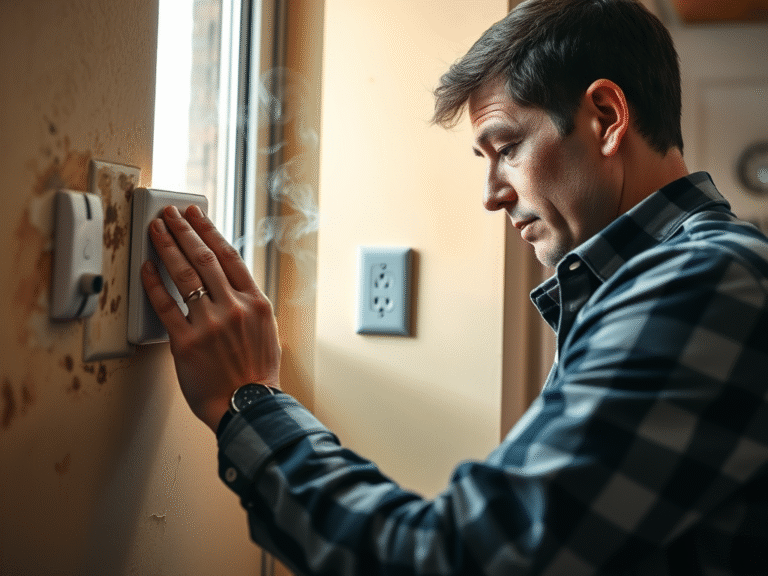Mold in homes, crawlspaces, basements, attics are extremely common and may lead to allergies, infections, toxin-medicated conditions for homeowners in Victoria, Cowichan, Duncan, Nanaimo, Parksville, Qualicum, Courtenay, Comox, Campbell River, and Port Alberni.
Patients have been reporting multiple ill health effects linked to exposures to mold. Studies of more than 1600 patients suffering ill effects associated with fungal exposure were presented at one meeting in Dallas in 2003 (21st Annual Symposium of Man and His Environment, Dallas, Texas, 19–22 June 2003) .To cite a few studies: Lieberman examined 48 heavily mold-exposed patients who had the following health problems: muscle and/or joint pain (71%), fatigue/weakness (70%), neurocognitive dysfunction (67%), sinusitis (65%), headache (65%), gastrointestinal problems (58%), shortness of breath (54%), anxiety/depression/irritability (54%), vision problems (42%), chest tightness (42%), insomnia (40%), dizziness (38%), numbness/tingling (35%), laryngitis (35%), nausea (33%), skin rashes (27%), tremors (25%) and heart palpitations (21%). Rea et al.’s study of 150 heavily indoor mold-exposed patients found the following health problems: fatigue (100%), rhinitis (65%), memory loss and other neuropsychiatric problems (46%), respiratory problems (40%), fibromyalgia (29%), irritablebowel syndrome (25%), vasculitis (4.7%) and angioedema (4.0%). These clinical reports suggest that there can be multisystem adverse effects of airborne mold. All reported cases had environmental mold exposure consistent with toxic mold exposure.
RELATED HEALTH EFFECTS
Learn More – The effects of breathing mold or mildew
Fungi can exert ill health effects by three major mechanisms: allergy, toxicity, and infection.
Toxicity
Fungi produce a wide variety of toxic chemicals called
mycotoxins. Some common mycotoxins include: aflatoxins—very potent carcinogens
and hepatotoxins, produced by some Aspergillus species; ochratoxins—nephrotoxic
and carcinogenic, produced by some Aspergillus and Penicillium;
sterigmatocystin—immunosuppressive and a liver carcinogen, produced by
Aspergillus species, especially A. versicolor; trichothecenes—produced
primarily by Stachybotrys and Fusarium species and have been reported to
inhibit protein synthesis and cause hemorrhage and vomiting.
Fungi also produce beta glucans, which have immunological effects. The smell of
molds comes primarily from volatile organic compounds. Read
more for causes of mold.
Adverse human and animal effects from mycotoxin-contaminated foodstuffs have
been well recognized since the early twentieth century, but the pathway of
mycotoxin injury through inhalation is questioned. Because it is unethical to conduct controlled
studies on humans with inhaled mycotoxin exposure, only controlled animal
exposures and human cohort and case–control studies can be carried out.
The literature reveals that significant amounts of mycotoxins (including
ochratoxin, sterigmatocystin and trichothe- cenes) are present in indoor dust
and dust or fungal particles less than 10mm in diameter are respirable, thus
allowing absorption of mycotoxins through the lungs.Patients exposed to indoor
Stachybotrys have been found to have measurable blood levels of the
Stachybotrys hemorrhagic toxin stachylysin. Levels of trichothecene mycotoxins
in urine have also been found in significantly higher levels in patients
exposed to high indoor fungal levels as opposed to an unexposed control group.
Blood ochratoxin levels have been found to be significantly higher in food
industry workers exposed to airborne ochratoxin vs. unexposed controls. These
findings support an inhalation pathway for entry of mycotoxins into the body.
What Can You Do?
In most situations, Pacific Decontamination Services can neutralize your mold up 99.99999%. If our spray, fog or foam can touch it, we can neutralize it. Our services come at a fraction of the cost as compared to the expensive approaches like soda / dry ice blasting, hepa vacuuming, scrubbing, removal of insulation and deconstruction and reconstruction of the attic and roof.
We neutralize the mold in your attic by applying our eco-friendly, safe
chemical everywhere within your attic, focusing our efforts on the visible mold
areas. Depending on the job, we apply our formula by spray, mist, foam, or fog.
We further kill all airborne mold
spores in your attic. The average time of our on-site service is
approximately one hour. An additional four hours is required to achieve maximum
effectiveness. We ask that you stay out of the attic for approximately 5 hours
in total. Read more about how we work.
Pacific Decontamination Services uses the world’s strongest, most effective and safe antimicrobial disinfectant, deodorization and chemical decontaminate. Our professional application will eliminate up to 99.99999% of any allergen, germ, bacteria or fungus that it touches. AND as powerful as it is, it is also completely safe.
What do you do next? How do you solve the challenge of mold and associated health hazards?
Call Pacific Decontamination Services at 778-269-0208 or email us!
Serving All of Vancouver Island: Victoria, Cowichan, Duncan, Nanaimo, Parksville, Qualicum, Courtenay, Comox, Campbell River, and Port Alberni.






